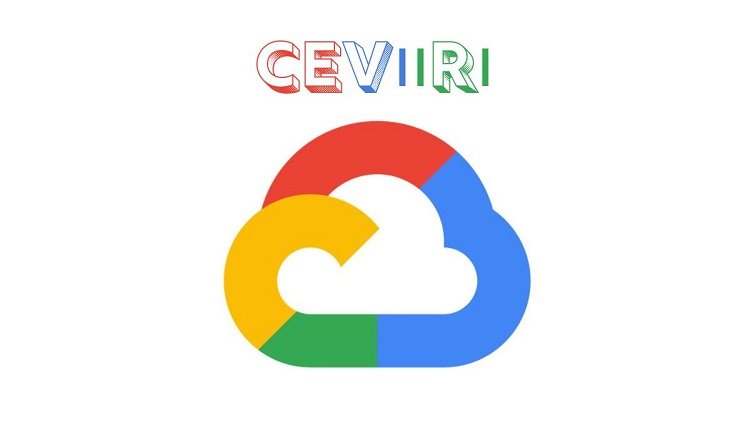In today’s globalized world, translation plays a crucial role in bridging communication gaps between people of different cultures and languages. Whether it’s for business, travel, or personal reasons, the need for accurate and efficient translation is paramount. With advancements in technology, we now have access to various translation tools and software that make the process faster and more convenient. One such tool that has gained popularity is Cevıırı. In this article, we will explore what Cevıırı is and why it has become a significant player in the field of translation.
Cevıırı is an advanced translation technology that utilizes artificial intelligence and machine learning algorithms to provide automated translations. It is a powerful tool that enables users to translate text from one language to another with just a few clicks. The significance of Cevıır lies in its ability to save time and effort, as well as provide quick and accurate translations. This technology has revolutionized the translation industry, making it more accessible and efficient for businesses and individuals alike.
How does Cevıırı work?
Cevıırı uses a combination of natural language processing and machine learning techniques to perform translations. It analyzes large amounts of multilingual data to understand the nuances and patterns of different languages. By leveraging this knowledge, Cevıırı is able to generate translations that are contextually accurate and linguistically sound.
The process begins by inputting the source text into the Cevıırı interface. The software then applies various algorithms to analyze the text and identify the most appropriate translation. Cevıır takes into account factors such as grammar, syntax, and vocabulary to ensure the translated text is coherent and understandable. The more data Cevıırı is exposed to, the better it becomes at generating accurate translations, as it continuously learns and improves its language models.
Advantages of using Cevıırı for translation
There are several advantages to using Cevıırı for translation, which have contributed to its rise in popularity. One of the biggest advantages is the speed at which translations can be generated. Unlike traditional human translation, which can be time-consuming and expensive, Cevıırı provides instant translations that can be accessed anytime, anywhere. This is particularly beneficial for businesses that require quick turnaround times or individuals who need immediate translations for personal use.
Another advantage of Cevıırı is its cost-effectiveness. Human translation services can be quite expensive, especially for large volumes of text or ongoing translation needs. Cevıır offers a more affordable alternative, as it eliminates the need for human translators and their associated costs. This makes it a viable option for businesses of all sizes and individuals with budget constraints.
Additionally, Cevıırı offers a high level of accuracy in its translations. While no automated translation tool is perfect, Cevıır has made significant strides in improving its translation quality. With advancements in machine learning, Cevıırı is continuously learning and adapting to different languages, resulting in more accurate and reliable translations.
Limitations and challenges of Cevıırı
While Cevıırı offers many benefits, it is not without its limitations and challenges. One of the main limitations is the inability to capture the complexities of human language and culture. Languages are constantly evolving, and translating idiomatic expressions, cultural nuances, and context-specific meanings can be challenging for automated systems like Cevıırı. This can lead to inaccuracies or misinterpretations in the translated text.
Another challenge is the lack of domain-specific knowledge. Cevıırı relies on large amounts of general language data, but it may struggle with specialized terminology or technical jargon. This can be a drawback for industries that require precise and industry-specific translations.
Furthermore, Cevıırı may struggle with languages that have complex grammatical structures or syntax. While it has made significant progress in understanding and translating various languages, it may still encounter difficulties with languages that deviate from more common structures.
Cevıırı vs. human translation: Which is better?
The debate between Cevıırı and human translation is a contentious one, with proponents on both sides. Each approach has its own strengths and weaknesses, and the choice ultimately depends on the specific needs and requirements of the translation project.
Cevıırı excels in terms of speed and cost-effectiveness. As mentioned earlier, it can provide instant translations at a fraction of the cost of human translation services. This makes it a practical choice for simple, everyday translations or when time is of the essence.
On the other hand, human translation offers a level of accuracy and nuance that automated systems like Cevıırı struggle to replicate. Human translators possess an in-depth understanding of language, culture, and context, allowing them to capture the subtleties of a text and provide a more nuanced and accurate translation. This is particularly important for complex or specialized content, such as legal documents, medical texts, or creative writing.
In some cases, a combination of both approaches may be the best solution. By leveraging the speed and convenience of Cevıırı for initial translations, and then having a human translator review and refine the text, businesses and individuals can benefit from the advantages of both approaches.
The future of Cevıırı in the translation industry
As technology continues to advance, the future of Cevıırı in the translation industry looks promising. The ongoing development of artificial intelligence and machine learning algorithms will further enhance the capabilities of Cevıırı, making it even more accurate and efficient in generating translations.
Additionally, the increasing demand for translation services, driven by globalization and the digital age, creates a fertile ground for the growth of Cevıırı. The ability to provide instant translations at a lower cost will continue to attract businesses and individuals looking for quick and affordable solutions.
However, it is important to note that Cevıırı will not replace human translators entirely. While it offers convenience and cost-effectiveness, there will always be a need for human expertise in certain translation projects. The key lies in finding the right balance between automated and human translation, harnessing the strengths of both approaches to deliver the best possible results.
Tips for using Cevıırı effectively
To make the most of Cevıırı and ensure accurate translations, here are some tips to keep in mind:
- Provide clear and concise source text: Cevıırı performs best when the input text is clear and well-written. Avoid complex sentence structures, ambiguous phrases, or excessive use of idioms.
- Verify translations: Always double-check the translated text to ensure accuracy. While Cevıırı has improved significantly, it is not infallible, and errors can still occur.
- Use Cevıırı as a starting point: Consider Cevıırı as a tool to assist in the translation process rather than a standalone solution. Review and refine the translations as necessary, especially for sensitive or important content.
- Provide feedback: Many Cevıırı platforms allow users to provide feedback on translations. If you notice recurring errors or inaccuracies, provide feedback to help improve the system.
By following these tips, you can maximize the benefits of Cevıırı and achieve more accurate and reliable translations.
Case studies: Real-world examples of successful Cevıırı translations
To illustrate the effectiveness of Cevıırı in real-world scenarios, let’s look at a couple of case studies:
Case Study 1: Company X expands into international markets
Company X, a software development firm, wanted to expand its business into international markets. To reach a wider audience, they needed to translate their software interface and user documentation into multiple languages. Given the large volume of text and the need for quick translations, they decided to use Cevıırı. By leveraging Cevıırı, Company X was able to translate their content into multiple languages within a short period, allowing them to launch their software in new markets faster and at a lower cost.
Case Study 2: Traveler Y navigates a foreign country
Traveler Y was planning a trip to a country where they did not speak the language. In order to communicate effectively with locals and navigate their way around, Traveler Y relied on Cevıırı for translations. From reading menus to asking for directions, Cevıır provided instant translations that helped Traveler Y navigate the foreign country with ease. While there were occasional inaccuracies, Traveler Y found Cevıırı to be a valuable tool for basic communication needs.
These case studies demonstrate the versatility and usefulness of Cevıır in different scenarios, highlighting its potential to streamline translation processes and facilitate cross-cultural communication.
Alternatives to Cevıırı for translation needs
While Cevıırı has gained popularity, it is not the only option available for translation needs. There are several alternatives that offer different features and capabilities. Some popular alternatives to Cevıırı include:
- Human translation services: For projects that require a high level of accuracy, cultural understanding, or specialized knowledge, human translation services remain a reliable option. Professional translators can provide nuanced and contextually accurate translations tailored to specific needs.
- Translation memory tools: These tools leverage previously translated content to speed up the translation process. They store translations in a database and automatically suggest previously translated segments when similar content is encountered. Translation memory tools are particularly useful for maintaining consistency across large volumes of content.
- Collaborative translation platforms: These platforms enable businesses and individuals to crowdsource translations from a community of translators. They provide a collaborative environment where users can submit translation requests and receive contributions from multiple translators. This can be a cost-effective solution for projects that require a quick turnaround time.
The choice of translation tool or service depends on factors such as project requirements, budget, and desired level of accuracy. It is advisable to assess the specific needs and evaluate the available options before making a decision.
Conclusion: The role of Cevıırı in the evolving translation landscape
In conclusion, Cevıırı has become a significant player in the field of translation, offering speed, convenience, and cost-effectiveness. It has revolutionized the way translations are done, making it more accessible for businesses and individuals alike. While Cevıır has its limitations and cannot replace human translators entirely, it remains a valuable tool for certain translation needs.
As technology continues to advance, the future of Cevıır in the translation industry looks promising. With ongoing developments in artificial intelligence and machine learning, Cevıırı will continue to improve its accuracy and efficiency, further enhancing its capabilities.
The evolving translation landscape requires a balance between automated and human translation, harnessing the strengths of each approach. By leveraging the benefits of Cevıır while recognizing its limitations, businesses and individuals can achieve accurate and efficient translations that bridge the language barrier and foster global communication.








